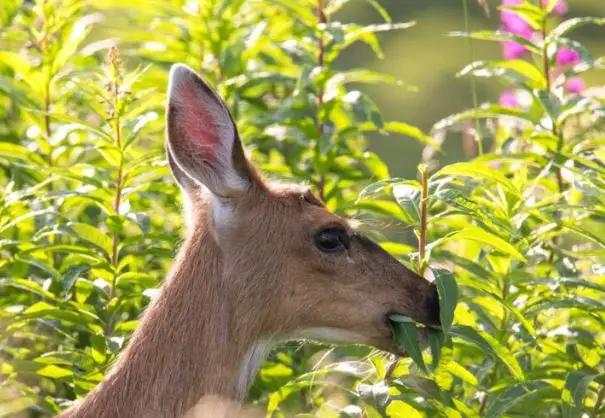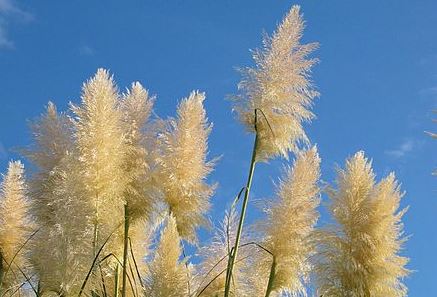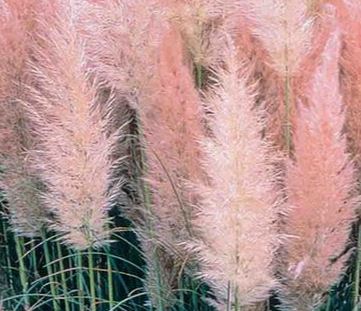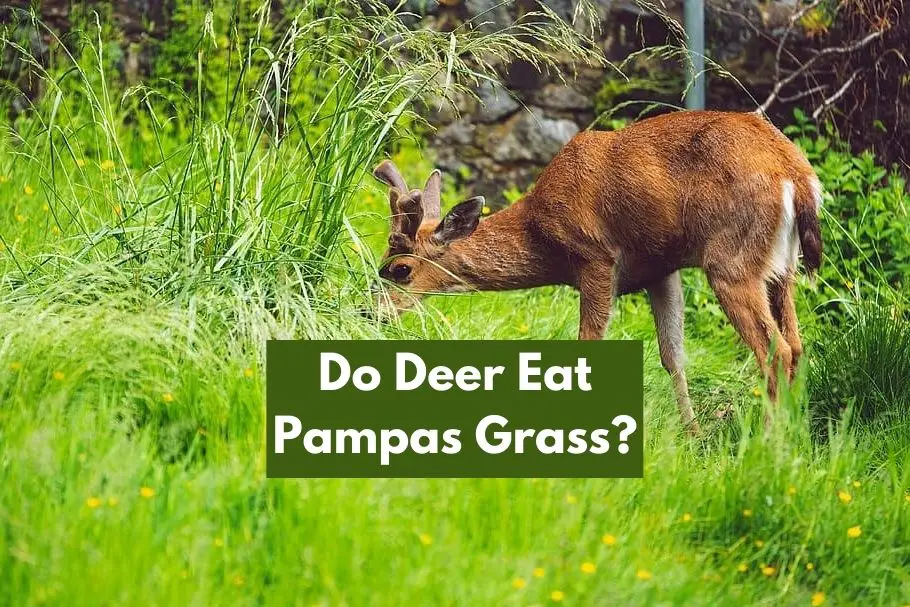If you’re an avid gardener or landscaping enthusiast, you may have pampas grass in your collection. Pampas grass is a popular ornamental grass used for many landscaping applications. If you also have deer in your area, you may be wondering: do deer eat pampas grass?
Deer do not like to eat pampas grass. Pampas grass provides very little nutritional value to deer and is hard for them to digest.
Why Don’t Deer Eat Pampas Grass?

As we covered, deer will not eat pampas grass, even when they’ve got the chance.
But why do they avoid it?
After all, deer are herbivores, so they love to eat leafy greens and flowers.
Pampas grass is a leafy green, so deer should like to eat it, right?
Deer don’t like pampas grass because it is tough on their digestive system and has little to no nutrition for them.
White-tailed deer can actually starve by eating only Pampas grass.
Is Pampas Grass Deer Resistant?

Deer do not like pampas grass, as it is hard on their digestive systems and contains very little benefits to them for eating it.
Pampas grass was rated as “rarely severely damaged” in a study on deer resistant plants by Rutgers University.
Do not bother planting Pampas grass if you’re planning a food lot or trying to attract deer to your area, as it will do nothing for you (or them).
Deer are most likely to eat pampas grass when it is young because it’s much easier for their stomachs to break down and because there is more nutritional value to them at this stage.
Is Pampas Grass Good For Deer?

Pampas grass is not good for deer because it’s hard for their digestive system to process in order to extract the nutrients that deer need.
Pampas grass contains minerals like phosphorus and calcium.
Deer need calcium for bone, teeth, and antler growth and health as well as other bodily functions like milk production and metabolism.
Phosphorus also aids deer in body and antler growth.
While all of these nutrients are very valuable to deer, their digestive tracts can’t process pampas grass well enough to gain the benefits.
The reason for this is that as the amount of digestible dry matter increases, the more nutrition is passed on to the animal.
Pampas grass for deer is not very digestible. A deer can only digest about 45-55% of the material due to thicker cell walls within each blade of grass.
To put this in perspective, plant cell contents are about 98% digestible, and this is where the proteins, carbs, and other nutrients are located.
Cell walls contain other low-value materials for deer but are only about 50% digestible, leaving very little actual food for a deer to benefit from by eating Pampas grass.
Even if Pampas grass is turned into hay, it doesn’t help a deer’s ability to digest it.
Alternatives To Pampas Grass For Deer
While many folks think that “everything green” in the forest is acceptable to deer, there are actually not many plants that deer will eat in a given area.
Pampas grass is considered a “forage”, which includes seasonal perennial grasses. Forages have the lowest digestibility and are much better suited for grazing animals like cows.
Deer prefer to eat weeds or “browse” plants, like the tips of woody shrubs and trees, and occasionally broad-leaved plants.
Deer also love to eat forb plants, which are flowering, nongrassy plants that have seed and stems that die at the end of each growing season, like wildflowers.
Can Deer Eat Pampas Grass? Wrapping Things Up
So, do deer eat pampas grass?
The answer is yes!
Deer will usually not eat pampas grass unless there’s no other food sources around.
They can actually benefit from the vitamins and minerals found in it, but their systems have a hard time breaking it down.
Deer are the most likely to eat Pampas grass when it is young and just coming in.
Just be sure to take care with your scent, the size of the portion, and how many deer you’re feeding when planting pampas grass for them.
Have any observations to add to the discussion? Be sure to let us know in the comments below.
Check our our other helpful gardening and wildlife guides while you’re here:
- Do deer eat Bermuda grass?
- Do deer eat orchard grass?
- Do deer eat white pine?
- Do deer eat mulberry trees?
- Do deer eat skyrocket junipers?
- Do deer eat calibrachoa?
- Do deer eat trumpet vine?
- Do deer eat Oriental lilies?
- Do deer eat Virginia creeper?
- Do deer eat Asiatic lilies?
- Do deer eat morning glories?
- Do deer eat portulaca?
- Do deer eat pansies?


